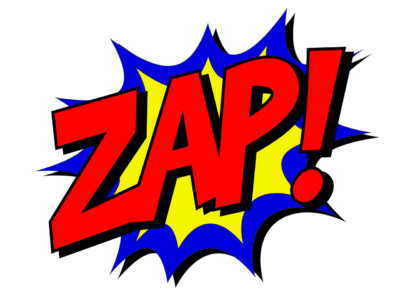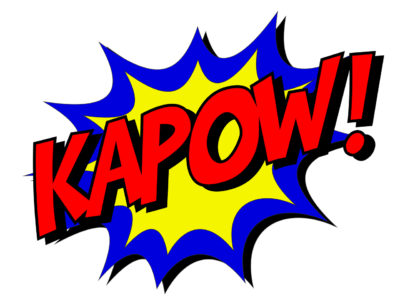I felt like a superhero this week. I taught collaboration to seventh-graders. I taught them to come to a consensus quickly. I taught them to listen to each other’s ideas and incorporate them into the final product of their learning.

It was lovely, and it was dynamic, but let’s not get carried away. The same students, more likely than not, degraded one another’s opinions outside of class. The same students will groan and mutter next time I put them in groups they did not choose. It takes time and direct instruction to overcome what seems like a natural tendency to avoid cooperation, collaboration, and consensus.
And that’s the problem. How well have we been teaching these skills to our students?
Look at the news, read your Twitter feed, listen to the people around you. Has it always been so difficult for people to come to consensus, to make decisions together for the good of the larger group? I wonder how we got to be so divisive, so eager to disagree with one another. And, when did we become so publicly cruel to one another?
Okay, I’m being dramatic. We have always had problems, especially when it comes to working together. Humans tend to shy away from working outside of the group to which they already belong. Enter racism, homophobia, gender issues, classism… every ism.
As a teacher, I often view the students in my small, diverse school as a sort of microcosm of humanity. I watch as my new seventh-graders self-select the students with whom they are willing to work. I also watch as they openly spurn the others, the ones who don’t fit in their closed groups. Is this basic human behavior? Perhaps. But it can be modified, if you are determined, stubborn, and methodical in your approach to teaching communication, empathy, and cooperation.
Our evaluation system requires us to create environments that foster communication, respect, and a culture of learning. How does this look? Like students quietly sitting in rows, listening to a teacher? Well, yeah, sometimes it does. However, a dynamic classroom environment is often buzzing with lively conversations and debate. And yet, I still meet teachers who avoid assigning “group work” or they struggle to assess communication skills at all.
Shouldn’t we be assessing communication skills? The state standards include speaking and listening. In fact, standard SL.K.1 for kindergarten requires “Participation in collaborative conversations with diverse partners about kindergarten topics and texts with peers and adults and small and larger groups.” By their junior year, our students should,”initiate and participate effectively in a range of collaborative discussions (one-on-one, in groups, and teacher-led) with diverse partners on grades 11-12 topics, texts, and issues, building on others’ ideas and expressing their own clearly and persuasively.” These standards aren’t assessed on the Smarter Balanced Assessment, but that does not make them less important.
So, we know students should be learning the communication skills necessary to respectfully share their ideas. And, we know that we are better teachers when we foster a learning environment that encourages the participation of our students in rich discussions. More than that, I think we all realize that the world could be a better place if we could help the next generation perfect their teamwork and discussion skills. Still, instructing and evaluating collaborative skills is a struggle for most teachers.
Personally, I pieced together my methods for teaching collaboration and consensus to students over the years, using trial and error. My guess is that very few of us have a curriculum for these essential skills.
However, times are changing. Collaboration is one of the touted “21st Century Skills.” Employers want, they NEED, good team players. I’ve been cruising around the website for the Partnership for 21st Century Skills. Collaboration is one of their “Four Cs.” It’s part of their Framework. They have some very clear materials explaining the need for teaching collaborative skills, AND for how to do it.
In the meantime, if you are not convinced about the need for collaborative skills, check out this article by Danxi Shen, of the Harvard Graduate School of Education, ‘Group and Cooperative Learning: Students as Classroom Leaders.”
After brushing up on what collaboration should look like in the classroom, kick back and watch one of those superhero team movies. Superheroes know the value of teamwork. In Justice League, Batman brings diverse heroes together to defeat a threat to all of mankind. When Aquaman resists him, saying, “A strong man is strongest alone; ever heard that?” Batman replies, “That’s not the saying, that’s like the opposite of what the saying is.” My students often think they are better off on their own. My job is to help them see the power they wield in groups.
I guess that makes me Batman.
I agree with you, Lynne, about students’ social interactions being a microcosm of humanity. I’ve worked in schools where teachers have similar cliques and collaboration either doesn’t happen much, or happens mainly under duress. I think we all (students and teachers) need clear goals for collaboration, supports and structure to do so effectively, and accountability to make sure everyone is contributing. And moments where collaboration happens between students organically are so exciting, too!
Collaboration is a learned skill, for sure, as is conversation. I am generally an introvert, and while I appreciate good conversation (and I often learn a great deal), there is nothing I dread more than having to collaborate to complete a task or project…even and perhaps especially now in my adult life.
For the exchange of ideas and for learning from an another, yes, we must get conversations rolling. And, we do have an obligation to teach kids how to collaborate on work… unfortunately, assigning group tasks and teaching kids how to collaborate are two very different things.
“Group Work” has a terrible reputation. We should never do something because someone said we should do it, and that seems to be to often the case. Like all things in the classroom, it must be intentional with clear goals in mind. That’s how we make it safe for the introverts, right?
I had one particular class one year where every student, it seemed, was adamant that their opinion was right. Every single time they spoke. It meant every discussion devolved into argument. I was having a horrible time trying to institute actual discussion.
Finally, I gave an assignment. I handed out a 3×5 card at the beginning of each discussion and told the students that by the end of the discussion I wanted them to write two statements on the card. What did someone say that surprised you? And what did someone say that changed your mind?
Somehow, the very fact that I expected them to change their mind made it acceptable. Suddenly students started responding to each other with comments, “That makes me change my mind.” It totally shifted the atmosphere in the room.
This is a great strategy, and simple, too. That’s one more use for index cards in my classroom. Thanks, Jan!